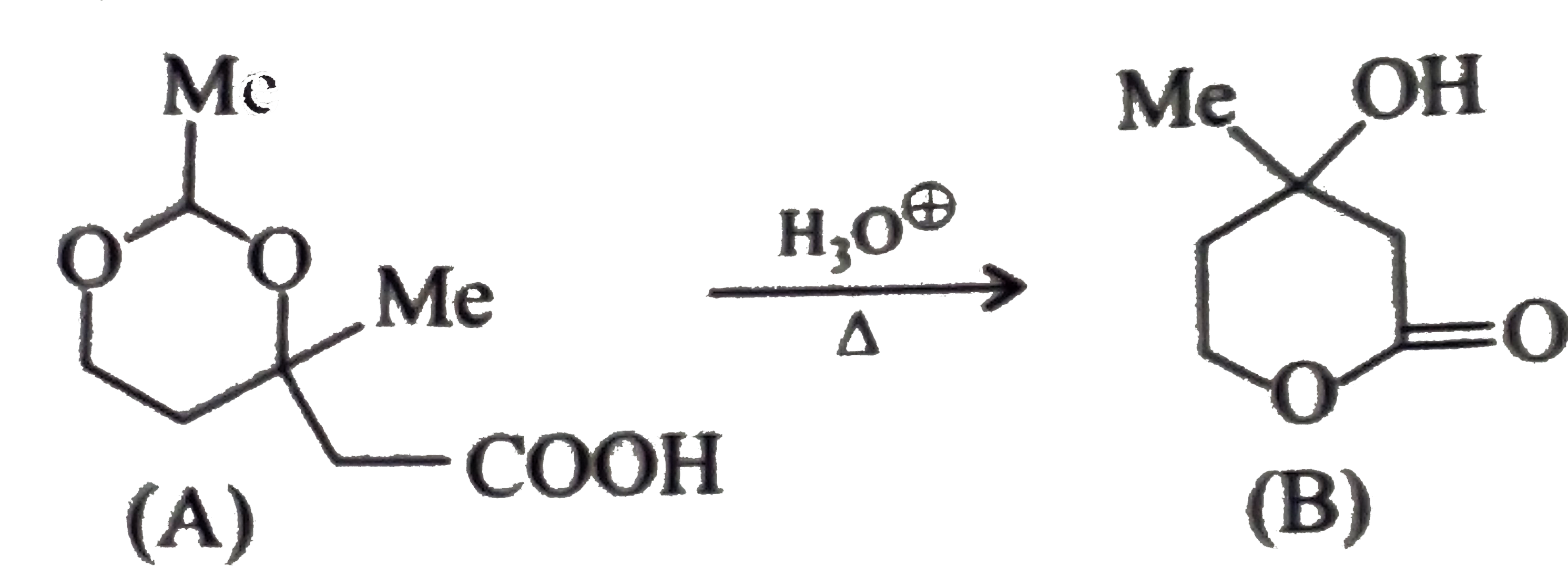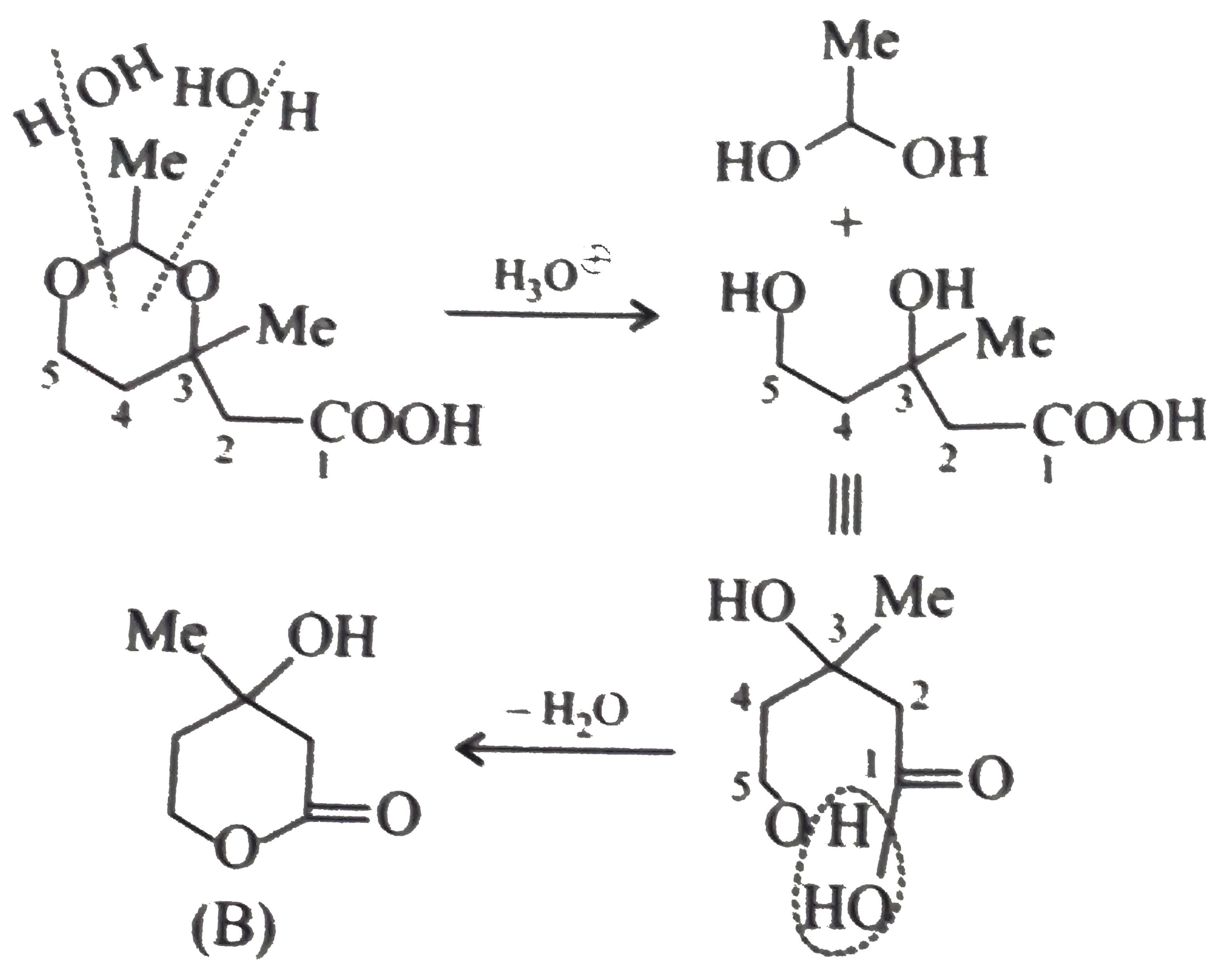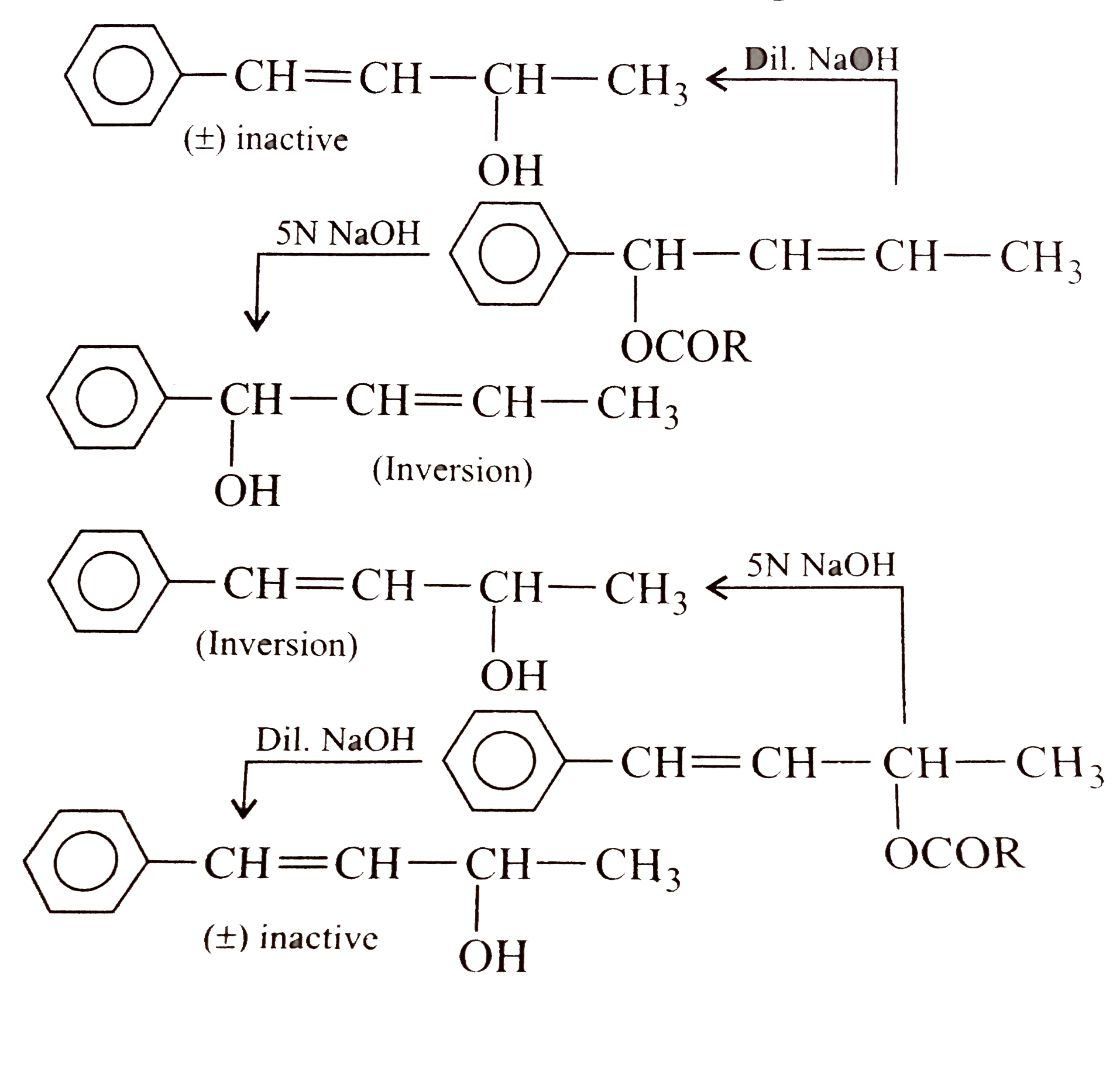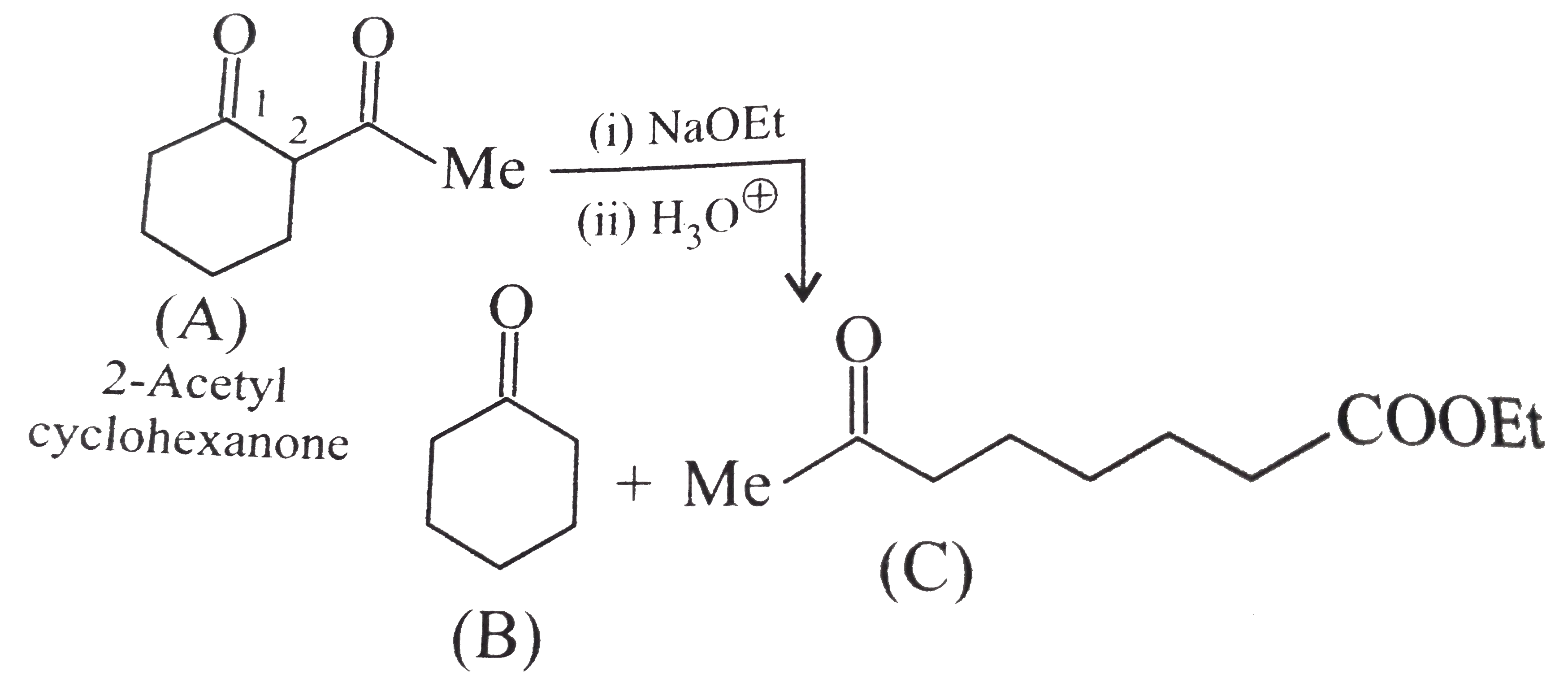Explain the machanism of the following reaction :
 .
.
Acid hydrolysis converts (A) to (I) and then cyclic ester (B) is formed.
 .
.
Topper's Solved these Questions
- CARBOXYLIC ACIDS AND THEIR DERIVATIVESBOOK - CENGAGE CHEMISTRY ENGLISHCHAPTER - CARBOXYLIC ACIDS AND THEIR DERIVATIVESEXERCISE - Exercises (Subjective)
19 Videos
- CARBOXYLIC ACIDS AND THEIR DERIVATIVESBOOK - CENGAGE CHEMISTRY ENGLISHCHAPTER - CARBOXYLIC ACIDS AND THEIR DERIVATIVESEXERCISE - Exercises (Linked Comprehension)
34 Videos
- CARBOXYLIC ACIDS AND THEIR DERIVATIVESBOOK - CENGAGE CHEMISTRY ENGLISHCHAPTER - CARBOXYLIC ACIDS AND THEIR DERIVATIVESEXERCISE - Exercises Archives (Analytical And Descriptive)
34 Videos
- BIOMOLECULESBOOK - CENGAGE CHEMISTRY ENGLISHCHAPTER - BIOMOLECULESEXERCISE - Exercises Archives (Analytical And Descriptive)
8 Videos
- CHEMICAL KINETICSBOOK - CENGAGE CHEMISTRY ENGLISHCHAPTER - CHEMICAL KINETICSEXERCISE - Archives Subjective
23 Videos
Similar Questions
Explain the mechanism of the following reaction:

View SolutionExplain the mechanism of the following reactions :
Acid catalysed dehydration of an alcohol forming an alkene.
View SolutionExplain the mechanism of the photochemical reaction occurring between hydrogen and chlorine gas.
View SolutionExplain the mechanism of the photochemical reaction occurring between hydrogen and chlorine gas.
View SolutionExplain the mechanism of the photochemical reaction occurring between hydrogen and chlorine gas.
View SolutionExplain the difference in the following reactions.
 .
.
View SolutionExplain or complete the following reactions.
(i)
View SolutionExplain the formation of the compound in the following reaction.
 .
.
View SolutionExplain with resons which of the following half reactions is oxidation and which is reduction?
Cl2+2e−→2Cl−
View SolutionExplain the following reactions :
(a) Gabriel Phthalimide reaction
(b) Coupling reaction
View Solution
